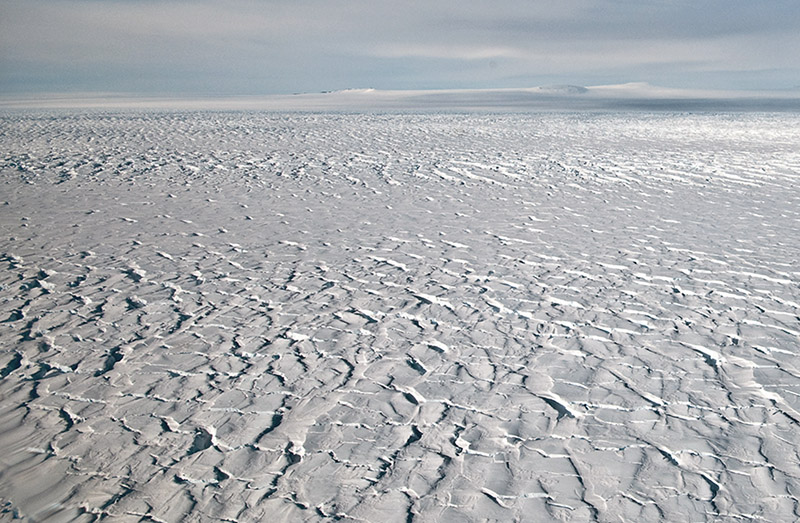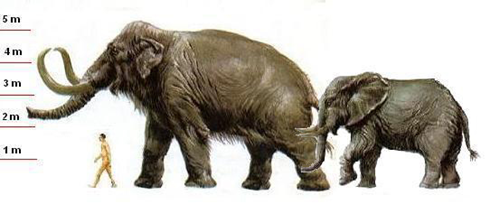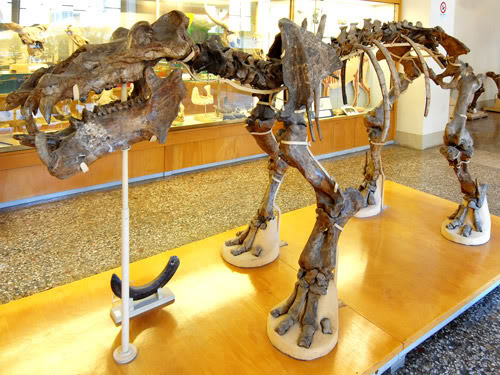In order to understand fully the physical world that humanity has inherited, we need to go back 70 million years of the Cenozoic era. Because period of present life does not include, as its name suggests, only evolution most of today’s animal species, and the man itself but also it includes the formation of the main continent outlines which had an important influence on the history of humanity. Thus, it is undeniable that the events from the Cenozoic period shaped today’s world.
Namely, while the geographical background, in front of which entire human history will be played, was created during consecutive Cenozoic periods, at the same time physical forms and habits of animals were created as well. Physical forms and habits of animals, man will get familiar with, including all those species that will be so important to human and it will serve as slaves to him.
The period when the oldest man appeared is closely related to the formation of a new phase in the Earth development. It is a new geological period, which is called the Quaternary and it is the fourth long period of the Earth development. To this period preceded the primary, secondary and tertiary as older periods. So far, Quaternary period, certainly, is the shortest period stage in the Earth development. Quaternary period is divided into the Pleistocene and Holocene epoch. It is particularly important to note that in the Quaternary period appeared Homo sapiens (lat. reasonable, wise man), who belonged to the same species to which belongs today’s human.



During Quaternary period, especially during the first part of so-called Pleistocene many strong climate changes happened, which from time to time fundamentally changed life in the vast areas. Climate changes ranged from relatively warm to extremely cold weather periods. Therefore, this period is often called the “Ice Age”. This certainly does not say whether in the geological periods that preceded it, there were not same or similar changes, but they are beyond the reach of the archaeological science, since they are not related to the human.
According to geologists, Pleistocene is very unusual period, both in geographical – climate and by biological changes. At that time, vast areas of land surfaces were made which were lifted high above the ocean, either as a plateau or as high mountain ranges. This is completely contrary to the earlier geological epoch, in which dominated the plains and low round hills, while there wasn’t a lot of contrasts in climate, vegetation and the animal and also these contrasts weren’t sudden.
Discovering and studying the paleolithic culture is impossible without the knowledge of climate change and its impact on the overall natural environment. The oldest man ancestors were true witnesses of all climate phenomena, experiencing them and adapting to these changes in order to maintain themselves and their kind. Thus, the natural life conditions at that time, were completely uneven, and as such these conditions were unfavourable for maintenance of the human race.
The word Pleistocene or Diluvium is of Greek origin, and in translation, it means the latest period. It includes four separate ice ages: Gins, Mindel, Riss and Würm glaciations.
The Ice ages (glacial periods) were rotated between warm and interglacial periods. Ice periods did not always meant a continuous harsh winter. During those periods the glaciers occasionally retreated, which affected to some extent on weather improvement. After a retreat, glaciers would come back and in that way glacier suppressed life that was already developed. At the high peak of all largest ice phases, almost third of the Earth’s surface was covered by an ice cover or glaciers, which stretch from the Arctic Ocean to the south over the territory of several million square kilometres with an ice thickness of 1 to 2 kilometres. Greenland was a centre of icing.
Great Scandinavian glacier has stretched all the way to England in the west, to the mountain of Beskid, to Ukraine and Povolozhye in the south, while in the east it spread to the Ural covering almost entire area of north and central Europe, as well as northwestern Asia. At the same time, the Alps were under the ice cover. There were also several smaller glaciers in the Pyrenees in Spain, the Apennine Peninsula, in Italy, in France and the Balkan Peninsula.



The areas of Caucasus and the Ural, and especially the Himalayas covered the vast glacier fields. In the north of the Siberian, an ice sheet has held up until today.
On the ground of North America, a glacier stretched from the north towards the river basins of the Mississippi and Ohio, while other glacier stretched from the west from Cordillera. South America as well had ice covers, primarily in the Andes and Patagonia.
In Australia, there were several smaller glaciers in the area of the New and South Wales, Tasmania and New Zealand. In African continent, in Kenya, in the Transvaal, and in the Atlas there were local glaciers but these glaciers had small distribution of ice. In tropical and subtropical regions, there was not ice and interglacial phases but only periods of heavy rain (pluvials) among which there were periods of great drought (inter-pluvials).
Flora during ice ages was completely different when it is compared to interglacial period. Due to that, during the period of glaciers, we have a very extensive Arctic flora, and in the interglacial ages, we have a tropical flora. Near glacier tongue, there was not any vegetation other than lichens. A bit further from that place, there was small vegetation and small islets of grass, but it could be found only in sheltered places.
Tundra grew closer to the ice sheets. During glaciers recession, tundra spread out occupying new areas. On tundra’s earlier territory, steppes were formed which were covered with thick grass and small trees. Climate of the Mediterranean area was quite mild. Glaciers that were there were just local. During rainy periods surfaces covered with grass and bush spread, especially in the area of the Sahara, which was full of life at the time.
Interglacial periods (inter-glacial) were very warm and as such very favorable for both flora and fauna, and people. At that time, on the ground of Western Europe plants grew, which needed much warmer climate compared to today’s (e.g. fig trees). Glacier surface were significantly reduced in size, while forest with a highly developed flora were replaced by the steppe.
During great rainy period’s, so-called inter-pluvials deserts were created. They spread out through an entire northern part of the African continent. That is how a surface for living decreased significantly. Just as flora adapted to the changes in climate, in the same way fauna adapt. Besides the arctic and tropical fauna, there were those animals that were adapted to life in cold, icy and warm, interglacial periods. This was possible only thanks to the gradual change of climatic life conditions, and not harsh change of climate.
During the ice age in the tundra, lived animals whose origin was dual. From the north, glaciers suppressed arctic animals, among which especially stand out reindeer, polar fox etc. Animals left the area of the Alps, led by the chamois and ibex. Climatic fluctuations often affected on the penetration of the tundra in the steppes, and steppe in the tundra. That is why often tundra animals can be found along with steppe animals and vice versa. In the steppe mainly lived small animals and some larger mammals, among which stands out especially giant mammoth and woolly – Siberian rhinoceros (both extinct in diluvium). Mammoth was actually a giant elephant. His height was around 4 meters.
His tusks were reaching a length up to 4 meters. He was found in the Siberian ice, in Berezovka. In his stomach was present only vegetarian food.



It is important to say that in interglacial period, some animals, especially monkeys and hippopotamus, penetrated from the warmer places of the Mediterranean all the way to the far west of the European continent. In the lower diluvium lived giant southern elephant, and later even greater elephant, then hyena, bear, big lion, deer, bison, horse, etc.
Diluvium African fauna has completely different character. Besides the southern elephant, cave lions and hyenas, in that area lived animals, which even today can be found in that area, primarily in the southern part of the continent. In such natural environment, prehistoric men created basis for future life and culture.
However, we still live under extraordinary climatic conditions of the Pleistocene era. Although it is very common that the last ten thousand years, that have passed since the last deglaciation, stands out as the Holocene or alluvium period, which present period (today) is also part of it. However, our period in which we live today could also be considered as a period, which still belongs to some period of creating hills and icing.
Not only do we live among the high mountainous areas, which have risen during the Pleistocene period and earlier Cenozoic era, but we also live in time of large disturbance within Earth’s crust. The storm, which built the Alps and the Himalayas, the Rockies and the Andes, is certainly calming down, but earthquakes and volcanic eruptions that destroy numerous lives and properties every year are part of the storms.
During the Pleistocene epoch some interglacial stages were warmer compared to the present geological period. Since these stages lasted up to quarter of a million years, it is difficult to judge whether the period of glaciers have passed or an entire human civilization is part of a one new interglacial stage similar to the earlier stages of Pleistocene-Holocene geological period.
